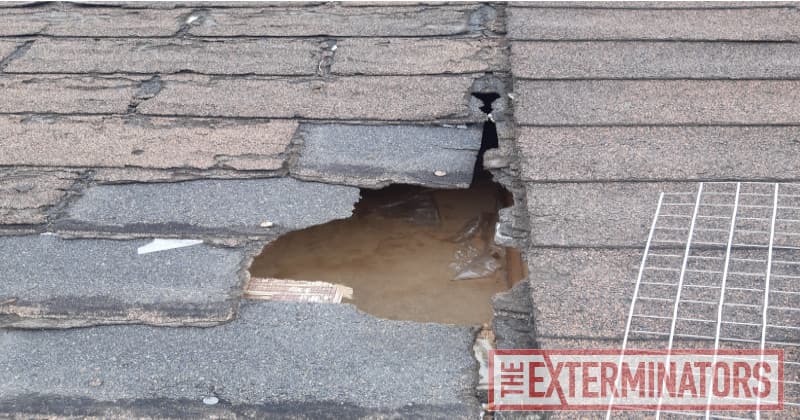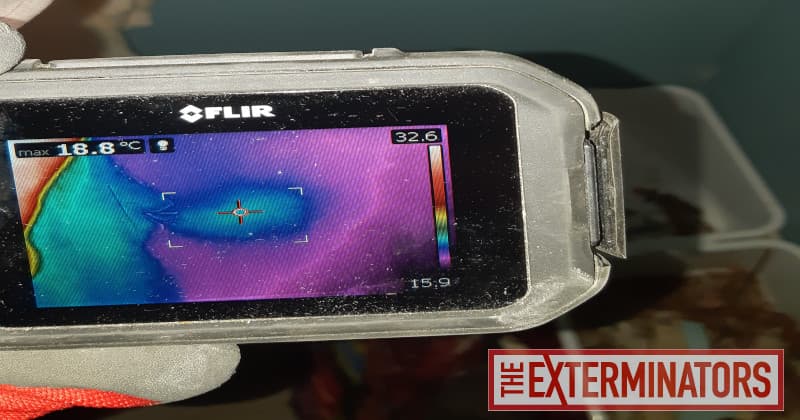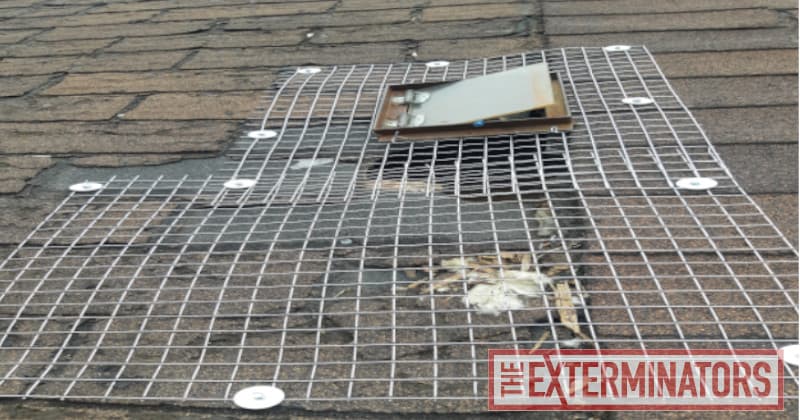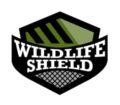Exterior Inspection
Homeowners complained of a possible raccoon presence in a residential property in Toronto. The technician was dispatched to a residential home. The homeowners believed that the raccoons were present on the 2nd or 3rd floor in the attic. Immediately the technician stumbles on a huge hole in the roof and noted that the roof was severely degraded and needed repair. The exterior inspection is meant to look for the main entry point and for areas of concern. Since the hole was very visible, it did not take the technician long to spot raccoon presence. Raccoon presence is often found in the attic due to the raccoons’ amazing climbing abilities. Raccoons use brute force to go inside of these spaces where they either push or tear away the soffit. It was suspected that baby raccoons also were present in the property.

The technician did an interior inspection of the property and found nothing. The technician had to leave and came back later and see what is going on. Upon coming back, the technician made note of a fairly large dent in the wall. A thermal camera was used to see if presence could be detected. The thermal camera picks up cold fronts inside the walls. By deducing that cold fronts are present, raccoon presence must be there. The dent resulted in exposed insolation which is a very suitable place for baby raccoons to be nesting in.
Initial Measures Taken
To get the mother raccoon out first, the technician installed a One-Way Door on top of the entry point. The One-Way door is a clever tunnel-like contraption with a door that swings open. Once the raccoon passes through the One-Way Door the door shuts and locks the raccoon out. This forces the mother raccoon to go elsewhere. In the case of babies, technicians carefully remove these delicate raccoons with the hand. The baby raccoons were relocated that same day to a nearby tree so that the mother raccoon could fetch them.

After the successful evacuation of the raccoons, the holes in the roof were sealed with flashing. This ensures that no wildlife animal can enter the property ever again. Degraded roofing as seen in this case, can be a call for concern. Not only can wildlife easily enter, but foreign objects that tree branches can fall down. This is especially bad news for the insolation and warmth escaping the house. It is recommended that homeowners get an exterior inspection done to evaluate the state of their roofs. Roof shingles can get easily damaged by the amount of sprawling wildlife. Raccoons and squirrels regularly climb our roofs to get into areas that they are not supposed to be.

In colder months there is a very high chance that wildlife animals, especially raccoons and squirrels, will try and break into your house through the roof while damaging shingles. Roofs should be inspected at least once a year to avoid further damage.
Conclusion
After the raccoon was removed and the baby raccoon was united with its mother, this case serves as a constant reminder that regular upkeep of our property is important in order to avoid these issues! Call Raccoon Control for swift and ethical removal.
